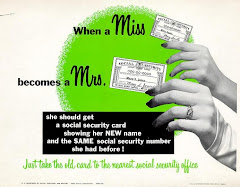If you want to receive benefits for any months between age 62 and the month before you reach your Full Retirement Age (FRA), your earnings from
work (wages or self-employment) must be below certain limits. Once you reach your
FRA, there are no limits to what you can earn and still receive your full Social Security retirement benefit.
Simple, right? Well, there are really two different annual earnings limits based on age and one monthly limit that applies only the first year benefits are paid.
First, the annual earnings limit for people who are at least age 62 but will not reach their FRA during the calendar year. For 2009, this limit is $14,160 in gross wages or net self-employment. Any current year earnings over that limit would cause a reduction of $1 in benefits for every $2 over the limit.
Example: John is 63 years old when he decides to reduce his earnings by switching to part-time work in March 2009. He estimates his gross wages for the year will be about $22,160 ($8,000 more than the earnings limit).
If John applies for benefits in January 2009, Social Security will withhold $4,000 (1/2 of $8,000) from his benefits beginning in January before any benefits will be paid to him. If his benefit rate is $1,000/month, he will get full benefits for May-December 2009.
The alternate monthly limit applies only the first year benefits are paid and is $1,180/month in 2009. Since John plans to reduce his monthly earnings in March, he could receive full benefits for March and April if he keeps his gross monthly wages to $1,180 or less each month beginning with March. Social Security applies either the annual or monthly test, whichever pays the most money for the year!
If John keeps his
annual gross wages at or below the $14,160 for 2009, he can receive full benefits for the entire year regardless of when he earns the money. He could earn the entire amount in one month or spread out over several months and still receive all his benefits.
All clear? Well what if John will reach his FRA in July 2009? OK, let's assume he will earn $200,000 during the year. We know that there is no earnings limit beginning with his FRA month, but what about the months before his FRA?
The 2009 earnings limit for people who reach their FRA anytime during the year is $37,680. As long as John does not earn more than $37,680 for months before his FRA (January through June), he can claim benefits beginning January. He can earn as much as he wants July on.
These limits change every year so be sure to check the
Social Security Online web site before you retire to see what limits will apply to you.
Remember: If you
receive a check for a month before your FRA month, your benefits will be permanently reduced by a certain percentage. The most important decision you will make when you apply for Social Security benefits is when to start your benefits. Do your research
before you apply!




.jpg)





